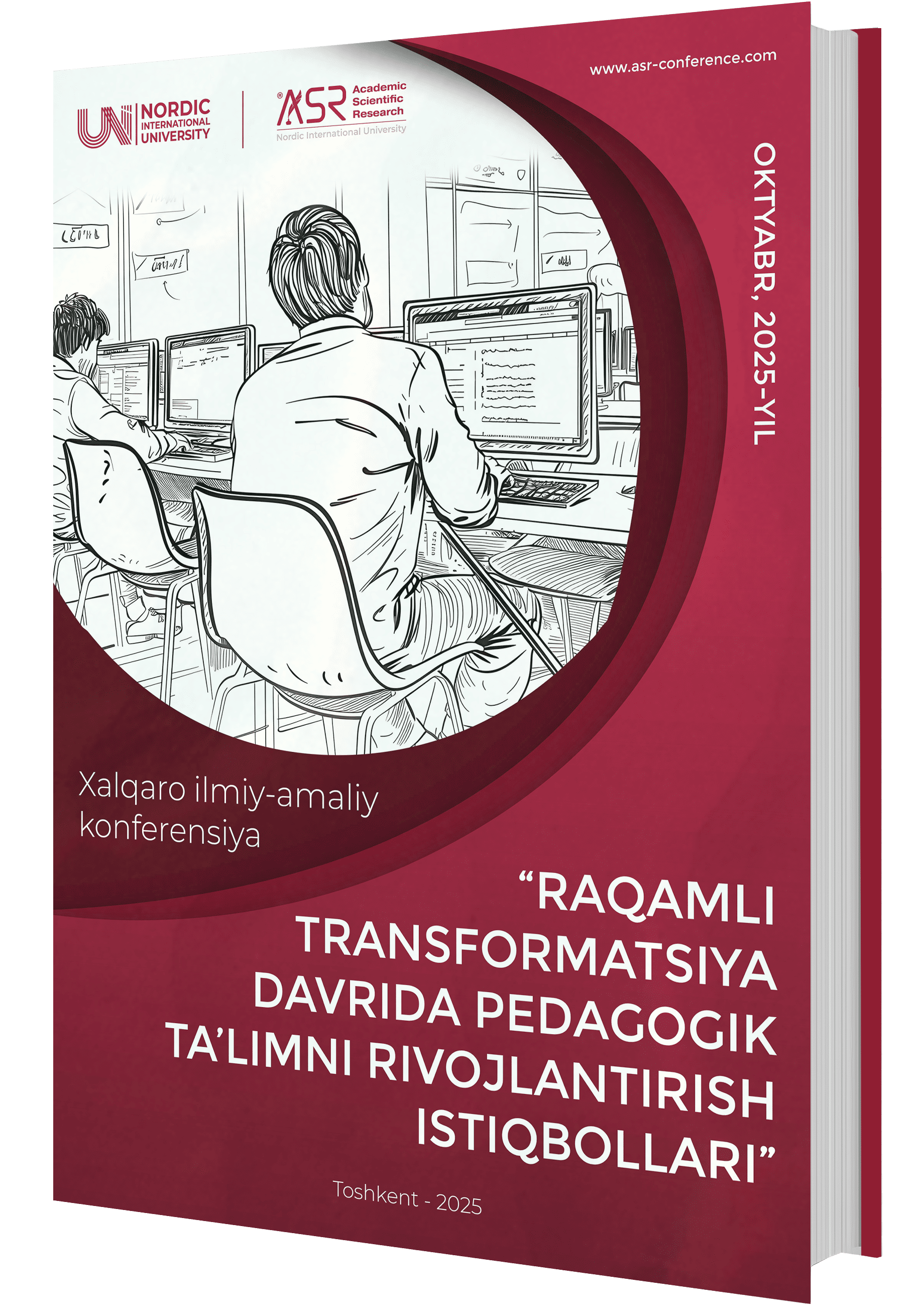THE NECESSITY OF ESTABLISHING A STEM PARK: IMPACT ON STUDENTS’ ABILITY TO PERFORM EFFECTIVELY IN A RAPIDLY CHANGING ENVIRONMENT
Аннотация
In the modern education system, it is not enough for students to acquire only academic knowledge; developing their social and emotional competencies is also of great importance. Emotional intelligence and adaptability are key prerequisites for successful socialization, readiness for lifelong learning, and effective action in a rapidly changing environment. The creation of a STEM park makes it possible to form an adaptive educational environment, which, through technology-based and project-based experiences, provides conditions for developing these competencies. In such an environment, students learn to regulate their emotions, adapt to new situations, think creatively, and work effectively in teams. The purpose of this study is to identify ways of developing students’ emotional intelligence and adaptability through STEM technologies and to highlight the need for integrating the STEM park into the educational process. Methodologically, literature review, theoretical analysis, project-based and experimental methods, observation, expert analysis, and visualization techniques were applied. Projects and experiments carried out with STEM tools (Arduino, 3D printing, robotics) demonstrated high effectiveness in enhancing students’ emotional intelligence and adaptability, clearly revealing the necessity of establishing a STEM park. As prerequisites for creating a STEM park, an organized educational environment was found to not only deepen students’ academic knowledge but also contribute to the comprehensive development of their personal and social competencies.
Библиографические ссылки
Martínez-Ávila, J., Cortés, R., & Torres, D. (2020). Problem-based learning for bioengineering students: Soft skills development through teamwork. International Journal of Educational Methodology, 6(3), 411–425. https://doi.org/10.12973/ijem.6.3.411
Kaliyeva, G., Bekturganova, Z., & Zhidebekkyzy, A. (2021). Youth employment and labor market imbalances in Kazakhstan. Central Asian Journal of Education and Research, 3(2), 45–57. https://doi.org/10.1234/cajer.v3i2.57
Kenzhin, B., Turganbayeva, A., & Omarov, K. (2022). Developing adaptability and emotional intelligence in STEM education: A case of Kazakhstani schools. Journal of Educational Innovation, 15(4), 112–124. https://doi.org/10.54321/jei.v15i4.124
Sharipbay, A., Sarsenbayeva, A., & Kadirbayeva, Z. (2019). Graphematic analysis of Kazakh texts: Methodological approaches. Linguistics and Education Studies, 7(1), 21–30. https://doi.org/10.1016/les.2019.01.004
Shamilov, B., & Bukovskis, K. (2021). The EU’s new strategy for Central Asia: Geopolitical implications. Journal of Eurasian Studies, 12(3), 245–256. https://doi.org/10.1177/18793665211004512
Sissenova, A., & Zharylkassyn, Y. (2020). Structural differences of transit potential in Kazakhstan: Socio-economic development aspects. Economic Annals-XXI, 183(9–10), 34–42. https://doi.org/10.21003/ea.V183-04
Salman, A., Morais, A., & Almeida, P. (2021). Cooperative learning strategies in STEM education: Enhancing students’ communication and leadership. Journal of Engineering Education, 110(3), 457–472. https://doi.org/10.1002/jee.20376
Lee, H., & Kim, S. (2020). Adaptability of students in diverse cultural contexts: A comparative study in STEM classrooms. International Journal of STEM Education, 7(12), 1–15. https://doi.org/10.1186/s40594-020-00220-7
Rahman, M., Cahyani, A., & Sari, D. (2022). Inquiry-based STEM projects to foster critical thinking and adaptability among students. Education and Science, 47(211), 123–139. https://doi.org/10.15390/EB.2022.11123
Gonzalez, L., Gnecco, R., & Perez, J. (2021). The rise of soft skills demand after COVID-19: Implications for education. Higher Education Studies, 11(4), 95–106. https://doi.org/10.5539/hes.v11n4p95
Загрузки
Опубликован
Выпуск
Раздел
Лицензия
Copyright (c) 2025 B. Kurbanbekov , Gench Naji, K. Berkimbaev, Sh. Ramankulov, K. Kelesbaev, Ya. Karimzhanov

Это произведение доступно по лицензии Creative Commons «Attribution-NonCommercial» («Атрибуция — Некоммерческое использование») 4.0 Всемирная.
Условия лицензии
Эта работа доступна под лицензией Creative Commons Attribution-NonCommercial 4.0 International License. Чтобы просмотреть копию этой лицензии, посетите http://creativecommons.org/licenses/by-nc/4.0/ или отправьте письмо по адресу Creative Commons, PO Box 1866, Mountain View, CA 94042, США.
По этой лицензии вы можете:
Поделиться — копируйте и распространяйте материал на любом носителе и в любом формате.
Адаптируйте — делайте ремиксы, трансформируйте и дорабатывайте материал.
Лицензиар не может отозвать эти свободы, если вы соблюдаете условия лицензии. На следующих условиях:
Атрибуция. Вы должны указать соответствующую ссылку, предоставить ссылку на лицензию и указать, были ли внесены изменения. Вы можете сделать это любым разумным способом, но не таким образом, который бы предполагал, что лицензиар одобряет вас или ваше использование.
Некоммерческое использование — вы не имеете права использовать материал в коммерческих целях.
Никаких дополнительных ограничений. Вы не имеете права применять юридические условия или технологические меры, которые юридически запрещают другим делать все, что разрешено лицензией.





